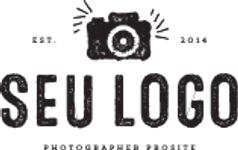According to a new report published by SNS Insider, the Hyaluronic Acid-Based Dermal Fillers Market Size was valued at USD 4.62 billion in 2023 and is projected to reach USD 9.94 billion by 2032, growing at a robust compound annual growth rate (CAGR) of 8.93% from 2024 to 2032. This growth is largely attributed to increased awareness about cosmetic enhancements, rising aging demographics, and the growing preference for minimally invasive aesthetic treatments.
Rising Demand for Non-Surgical Aesthetic Procedures
Hyaluronic acid-based dermal fillers have become a cornerstone in aesthetic medicine due to their ability to restore facial volume, reduce fine lines, and enhance facial contours with minimal recovery time. As people increasingly seek natural-looking results without undergoing surgery, the demand for these fillers is experiencing exponential growth across developed and emerging economies alike.
The aging global population, particularly in North America and Europe, is a major driver for this surge. Individuals aged 40 and above are the primary consumers of dermal filler treatments, seeking youthful appearance with subtle and reversible interventions. Additionally, younger demographics, influenced by social media trends and celebrity endorsements, are opting for early aesthetic enhancements, further boosting market adoption.
Technological Advancements and Product Innovation
Leading companies in the industry are focusing heavily on research and development to create next-generation fillers with enhanced durability, improved viscoelastic properties, and higher biocompatibility. Innovations such as Vycross and NASHA (Non-Animal Stabilized Hyaluronic Acid) technologies have improved the performance of dermal fillers, making them safer and more effective for diverse facial applications.
Moreover, new delivery mechanisms like cannulas and micro-needle injectors are increasing safety and precision, reducing complications and downtime. These innovations are also expanding the applications of hyaluronic acid-based fillers into new treatment areas such as hands, neck, and décolletage.
North America and Europe Maintain Market Dominance
Geographically, North America held the largest market share in 2023, driven by the presence of major aesthetic clinics, favorable reimbursement policies for certain procedures, and strong consumer awareness. The United States continues to be a global hub for aesthetic enhancements, with a significant number of certified dermatologists and plastic surgeons offering advanced treatment options.
Europe follows closely, supported by increasing disposable incomes, government support for aesthetic research, and a high level of awareness about non-surgical procedures. Meanwhile, Asia-Pacific is emerging as the fastest-growing region due to urbanization, rising middle-class income, and increasing influence of Western beauty standards.
Regulatory Environment and Safety Standards
The market is also benefiting from improved regulatory approvals and standardizations that ensure the safety and quality of dermal fillers. Regulatory bodies like the U.S. FDA and the European Medicines Agency (EMA) have established clear guidelines for filler ingredients, labeling, and post-market surveillance, building consumer trust and encouraging more widespread adoption.
However, challenges remain, including potential side effects such as swelling, bruising, or rare complications like vascular occlusion. To mitigate these risks, many aesthetic professionals are undergoing specialized training in facial anatomy and injection techniques, ensuring patient safety and satisfaction.
Key Players and Strategic Moves
Some of the key players shaping the global hyaluronic acid-based dermal fillers market include Allergan (AbbVie Inc.), Revance Therapeutics, Galderma, Merz Pharma, Sinclair Pharma, and Teoxane. These companies are engaged in strategic partnerships, product launches, and geographical expansions to solidify their market position.
For instance, Galderma has been actively expanding its product portfolio with the Restylane series, while Allergan’s Juvéderm brand remains one of the most widely used hyaluronic acid filler lines globally. Collaborations with dermatology clinics and medical spas have also become a key marketing strategy to ensure product accessibility and increase brand visibility.
Outlook and Future Trends
As the global beauty and wellness industry continues to evolve, the role of hyaluronic acid-based dermal fillers is expected to expand further. Rising demand from men for aesthetic treatments, increasing acceptance in middle-aged populations, and growing popularity of combination therapies (fillers + Botox or laser) are set to drive future growth.
Furthermore, with the integration of AI and 3D imaging technologies into dermatology and aesthetic practice, personalized treatment planning is expected to improve clinical outcomes, reducing complications and enhancing patient satisfaction.
About Us:
SNS Insider is one of the leading market research and consulting agencies that dominates the market research industry globally. Our company's aim is to give clients the knowledge they require in order to function in changing circumstances. In order to give you current, accurate market data, consumer insights, and opinions so that you can make decisions with confidence, we employ a variety of techniques, including surveys, video talks, and focus groups around the world.
Contact Us:
Akash Anand – Head of Business Development & Strategy
📧 info@snsinsider.com
📞 Phone: +1-415-230-0044 (US) | +91-7798602273 (IND)
Other Trending Reports
